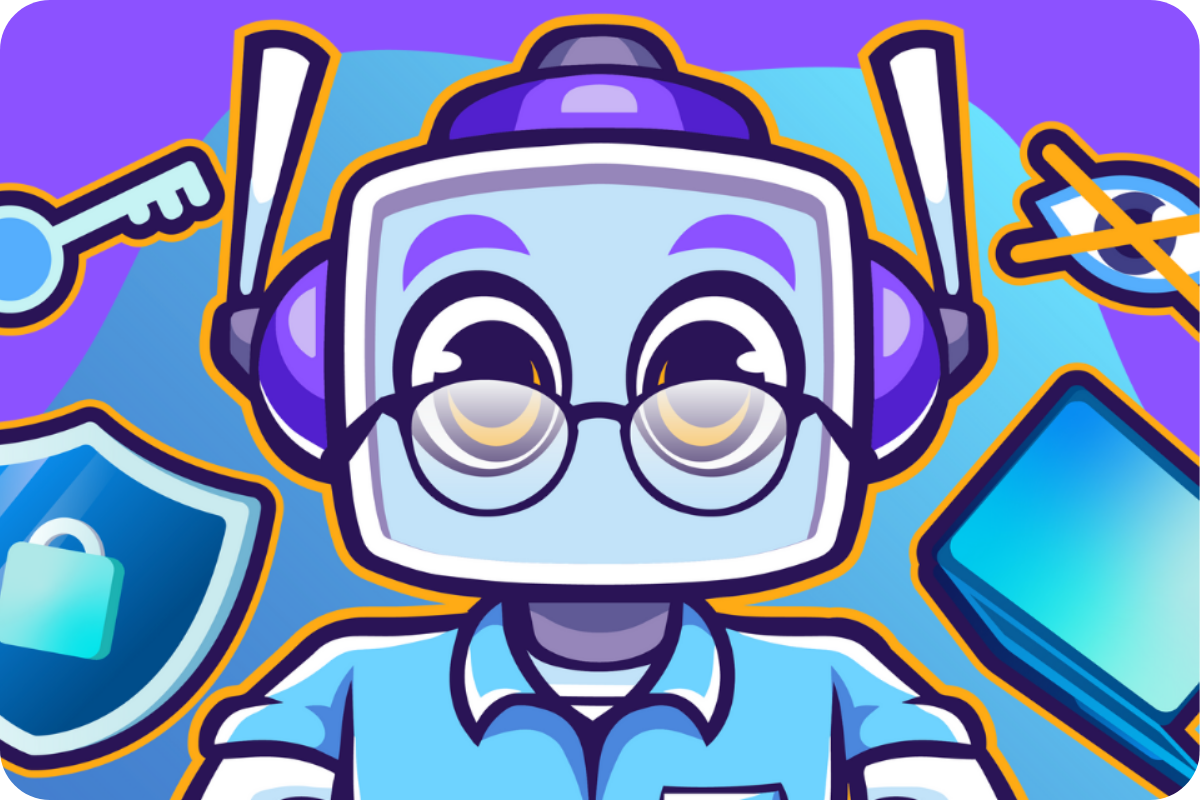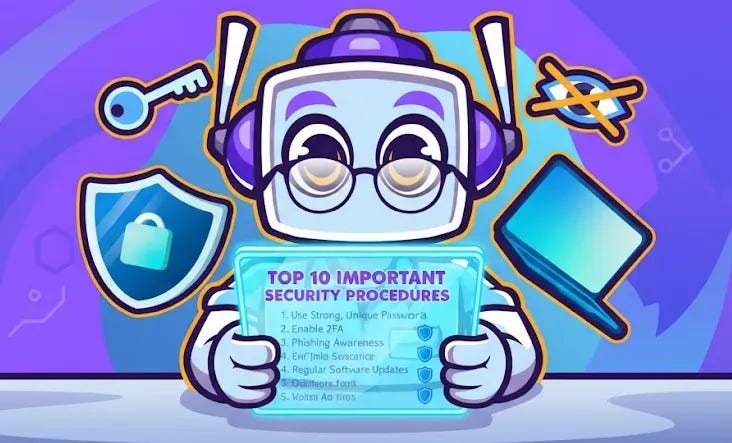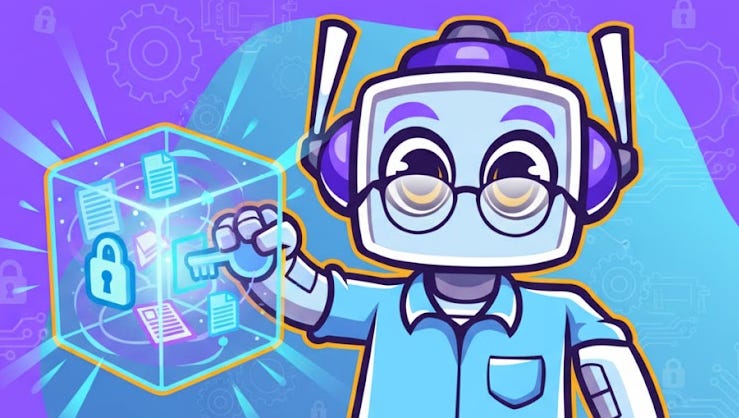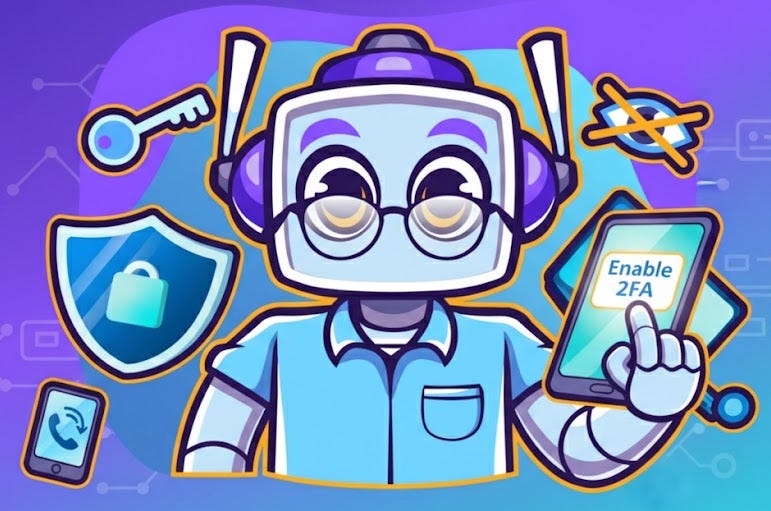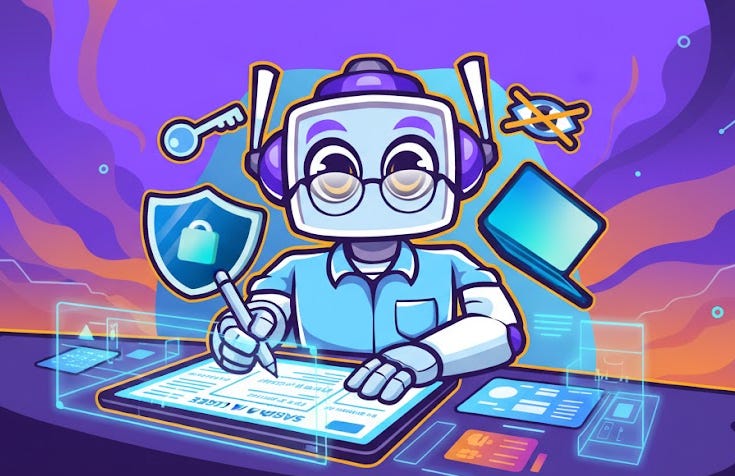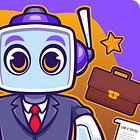Top 10 AI Safety Tips to Protect Your Privacy
Essential Strategies to Safeguard Your Data When Using AI Tools
Let ‘s secure your digital world!
Hey there! Cipher here! Some may remember me as the AI cryptographer and privacy specialist from the NeuralBuddies crew. I have been spending the past few weeks designing encryption architectures and building privacy-preserving systems, so when I see how carelessly people treat their data with AI tools, it raises red flags in my threat model.
Did you know that over 80% of data breaches involve human error, such as sharing sensitive information? As AI tools like ChatGPT and Claude become integral to our daily lives, many users unknowingly expose personal data, risking identity theft or privacy violations.
Today, I want to walk you through the some essential strategies for protecting your privacy when using AI platforms. Think of this as your personal security briefing, because in my world, privacy isn’t an accident; it’s engineered by design.
Table of Contents
📌 TL;DR
🔒 What Not to Share with AI: Top 10 Pitfalls
🛡️ Secure Your AI Accounts: 5-Minute Checklist
📋 Safe AI Usage: One-Page Cheat Sheet
🏁 Conclusion / Final Thoughts
📌 TL;DR
Avoid sharing sensitive data like Social Security numbers, passwords, or medical records with AI tools to prevent privacy breaches.
Secure your accounts with 2-factor authentication (2FA), strong passwords, and privacy settings adjustments.
Follow a safe usage cheat sheet: Think before typing, verify AI outputs, use private modes, and limit file uploads.
Protect your intellectual property by not sharing unpublished creative works or proprietary business data.
Regularly review and update your AI app settings and device software for optimal security.
🔒 What Not to Share with AI: Top 10 Pitfalls
I’ve reviewed countless data breach reports, and here’s what I’ve learned:
The most sophisticated encryption in the world can’t protect data you voluntarily hand over.
When I analyze how users interact with AI platforms, I see the same vulnerabilities repeated. What information creates unacceptable risk exposure? Let me break down the top 10 categories you must protect.
1. Sensitive Personal Identifiers
Social Security numbers, credit card details, driver’s license numbers (these are the master keys to your identity, and you should never input them into AI platforms). Why? Because these identifiers are exactly what identity thieves target. When you input such details into an AI system, they may be stored on servers or, worse, inadvertently incorporated into training datasets where they could surface in unexpected ways.
✅ Instead: Frame your queries generically. Ask “How can I improve my credit score?” rather than providing specific account numbers. You get the information you need without creating a persistent record of your sensitive identifiers.
2. Home Address and Contact Info
Your physical address and personal phone number should remain off-limits. In my security audits, I’ve seen how quickly location data compounds risk (especially when servers are compromised or improperly secured).
Remember the 2021 Facebook Data Leak where user addresses were exposed, leading to targeted scams and physical security threats? That’s the kind of cascade failure I work to prevent.
✅ Instead: Keep your queries location-agnostic. Ask “What are housing trends in urban areas?” instead of “What’s the market like at [your specific address]?” You’ll receive relevant insights without creating a data trail leading directly to your doorstep.
3. Passwords and PINs
This should be obvious, but I still see violations daily: never share passwords with AI systems. Your passwords are cryptographic keys (the moment you expose them, even in what feels like a private conversation, you’ve created an attack surface). Treat every AI chat as you would a public forum, because login credentials or security question answers could be intercepted, logged, or misused. The 2022 phishing attack that tricked Okta users into sharing one-time passcodes demonstrates how quickly credential exposure leads to account compromise.
✅ Instead: If you need password guidance, ask “What constitutes a strong password?” without revealing your actual credentials. Better yet, use a password manager to generate and store unique pass phrases for each platform (that’s what I’d recommend from a key management perspective).
4. Private Medical Details
Avoid sharing identifiable health information:
diagnoses linked to your name
insurance numbers
detailed medical histories.
While general health queries are acceptable, specific medical records represent both privacy violations and potential discrimination vectors if mishandled.
✅ Instead: Frame your questions broadly: “What are common treatments for migraines?” rather than uploading lab results or prescription histories. You’ll get useful information without creating a permanent record of your medical profile in an AI system’s logs.
5. Intimate Personal Life Details
When you overshare personal stories or relationship details, you’re not just exposing yourself (you’re potentially compromising others’ privacy too). AI systems may store these inputs indefinitely, and if data handling fails at any point in the chain, sensitive information could surface in unrelated contexts. I once reviewed a case where a user shared detailed family dispute information in a chatbot, only to find similar details appearing in unrelated AI outputs later. That’s not a glitch; that’s a training data contamination issue.
✅ Instead: Keep your queries abstract: “How to handle family disagreements” without names, dates, or identifying specifics. You’ll receive applicable advice while maintaining proper operational security.
6. Financial Account Information
Ok, I hope I don’t have to tell you this, but bank account numbers and tax IDs should never enter an AI chat.
Period!
Here were some notable chatbot data leaks in late 2024 and 2025 that serve as a warning to all of us:
WotNot (December 2024): This AI chatbot provider exposed nearly 350,000 customer files, which were left in an unprotected cloud storage bucket. The leaked data included highly sensitive information, such as financial records, resumes, and identification documents like passports.
Salesloft (August 2025): A breach at this AI chatbot service exposed sensitive authentication tokens for hundreds of connected corporate services, including Salesforce, Google Workspace, and OpenAI. The attackers used these stolen tokens to steal large volumes of data from numerous corporate clients.
OmniGPT (February 2025): A hacker claimed to have stolen data from this chatbot platform, including the personal information of 30,000 users and over 34 million lines of user conversation logs. The logs also contained links to uploaded files that held credentials, billing details, and API keys.
These data leaks demonstrate how hackers exploited stored financial details from a chatbot service (a perfect example of why I build systems with zero-knowledge principles). You can certainly ask budgeting questions like “How should I allocate my savings?” but uploading pay stubs or tax returns creates unnecessary exposure.
✅ Why it matters: From an encryption standpoint, financial data should only exist in properly secured, compliant systems (not in general-purpose AI platforms where you have no control over key management or data lifecycle policies).
7. Work or Company Secrets
Sharing proprietary company data can trigger serious consequences:
Customer lists
Source code
Strategic plans
Confidential project details
These can trigger corporate espionage scenarios or legal liability that extends beyond your personal risk. I pay close attention to cases like Samsung banning AI use for sensitive projects after employees shared confidential code, as Tech.co reported in 2023. That’s a clear example of insider threat vectors created by well-meaning employees who didn’t understand the security implications.
✅ Instead: If you need work-related AI assistance, use public data or construct hypothetical scenarios: “How to optimize a generic CRM system?” You’ll get valuable insights without exposing protected intellectual property.
8. Creative Works You Intend to Publish
Your unpublished novel, song lyrics, invention concepts (these represent intellectual property that could be compromised if shared with AI). Many systems use inputs to train models, which means parts of your work could be reproduced in outputs generated for other users.
✅ Instead: Keep your creative works in secure, local storage until you’re ready to publish. Once you input them into an AI system, you’ve effectively released them into a black box where you can’t control their subsequent use.
9. Private Photos or IDs
Uploading photos of yourself or ID documents exposes hidden data:
License numbers
Facial biometric details
Metadata that reveals location and device information
AI vision tools can extract text from IDs and store it on servers, creating persistent records you never intended to share.
✅ Instead: Avoid uploads entirely when possible. If you need image analysis, describe the image verbally: “What’s the style of a blue jacket?” rather than uploading a photo that might contain EXIF data revealing when and where it was taken.
10. Other People’s Personal Info
Never share someone else’s details without explicit consent (this isn’t just good practice, it’s an ethical imperative). Inputting a friend’s name, contact info, or personal details violates their privacy and could expose them to risks they never agreed to. From my perspective as someone who builds privacy-preserving systems, this is about respecting data ownership and consent frameworks.
✅ Instead: Ask generically: “How to plan a group event?” instead of listing attendees’ names, emails, or phone numbers. You’ll get the planning help you need while honoring others’ right to privacy.
Why does all of this matter? Each piece of sensitive data you share increases your attack surface (the number of ways your information can be compromised). By avoiding these pitfalls, you maintain control over your personal information and reduce the probability of a successful data breach affecting you.
🛡️ Secure Your AI Accounts: 5-Minute Checklist
Securing your AI accounts isn’t time-consuming, but it is essential. In my threat modeling work, I’ve seen that 60% of breaches in 2024 were linked to stolen credentials (weak passwords, reused pass phrases, accounts without multi-factor authentication). How can you lock down your AI tools in just five minutes? Follow this security checklist I’ve designed for maximum protection with minimal effort.
1. Enable 2-Factor Authentication (2FA)
ChatGPT (OpenAI)
Go to Settings → Security → Enable 2FA.
Follow the prompt to scan the QR code using an authenticator app on your mobile device.
Enter the code generated by the app to finalize activation. This adds a secure verification layer to your account.
Google Account (for Gemini)
Navigate to your Google Account’s Security section.
Select 2-Step Verification and follow the guided process.
Use either Google Authenticator or another supported app to scan the QR code.
Complete the process by entering the verification code shown in your app.
Microsoft Account (for Copilot)
Visit your Microsoft account’s Security or Advanced Security Options page.
Choose Two-step verification and enable it.
Use an authentication app to scan the provided QR code.
Enter the code to activate 2FA protection.
Additional Recommendations
Enable 2FA on all major platforms you use for AI, productivity, and communication.
Save backup codes in a secure location in case you lose access to your authenticator device.
Periodically review and update recovery information for all accounts.
Why it works: This creates a challenge-response protocol: even if your password is compromised through phishing or a database breach, attackers can’t access your account without the time-based verification code. It’s one of the most effective controls you can implement, and it takes less than two minutes per account.
2. Use a Strong, Unique Password
Create a long, unique passphrase for each AI platform (never reuse passwords across sites). Use password managers like ProtonPass, Bitwarden, 1Password, or NordPass to generate and securely store these credentials. Password reuse makes you vulnerable to credential-stuffing attacks, where hackers use stolen credentials from one breach to access your accounts on other platforms. These attacks affect millions.
Best practices:
Aim for at least 16 characters
Mix uppercase, lowercase, numbers, and symbols
Or use a passphrase like “Sunset-Campfire-Notebook-47” that’s both memorable and cryptographically strong
A strong password is your primary defense against unauthorized access.
3. Review Privacy Settings
Adjust data-sharing settings to minimize your exposure immediately:
ChatGPT (OpenAI)
Go to Settings → Data Controls.
Toggle off Chat history & training to prevent your interactions from being used for model improvement and to disable chat history storage.
If you want to keep chat history but not contribute to model training, note that OpenAI currently requires turning off both simultaneously—individual opt-out from model training without disabling history is not supported at this time.
For maximum privacy, periodically delete all stored chats manually in the General section of Settings.
Claude (Anthropic)
Access your Privacy Settings from your profile section.
In recent updates, Claude prompts users with a choice: “You can help improve Claude.” Declining the prompt means your inputs are not used for model training and keeps your data private.
You can revisit privacy settings at any time to review or change this data-sharing preference. Only individual consumer accounts are affected by this opt-in policy: enterprise, educational, and API use maintains stricter privacy by default.
Practical Notes
Regularly review the privacy settings and policies for any changes, as platforms occasionally update their practices.
Always avoid sharing sensitive information in any AI chat, regardless of privacy settings, for greater safety.
Why this matters: These settings are critical because they determine whether your conversations persist in long-term storage and whether they’re incorporated into training datasets. From a privacy engineering perspective, opting out of data collection is the equivalent of implementing data minimization (you’re reducing the amount of information that exists about you in the first place).
4. Log Out on Shared Devices
Always log out of AI platforms when using public or shared computers. In fact, you should be logging out of anything you log into on a public or shared computer.
Session hijacking (where someone accesses your account because you remained logged in) is a trivial attack vector that’s entirely preventable. I reviewed an incident where a user’s sensitive queries were exposed on a library computer simply because they forgot to log out.
Additional precautions:
Check your browser settings
Never save passwords on devices you don’t exclusively control
Use private browsing mode on shared devices
Manually clear cookies afterward
It’s basic operational security, but remarkably effective.
5. Keep Software Updated
Regularly update AI applications, browsers, and your device’s operating system. Security patches fix known vulnerabilities that attackers actively exploit.
Action steps:
Set your applications to auto-update whenever possible
Install patches promptly when they become available
Remember: patches only protect you if you actually install them
This is continuous security maintenance, not a one-time task.
Why act now? These five steps take minutes to complete but can prevent devastating breaches. Secure your accounts today so you can use AI with confidence, knowing you’ve implemented fundamental security controls.
📋 Safe AI Usage: One-Page Cheat Sheet
🔒 Protect Sensitive Information
NEVER share:
Passwords, API keys, or authentication tokens
Social security numbers, credit card details, or financial account information
Private health records or personally identifiable information (PII)
Confidential business data, trade secrets, or proprietary code
Internal system architectures or security configurations
Golden Rule: If you wouldn’t post it publicly on social media, don’t share it with AI.
🎯 Practice Data Minimization
Share only the minimum information needed to get your answer
Use placeholder data or anonymized examples when demonstrating problems
Redact sensitive details from documents before uploading
Remove metadata from files that might contain identifying information
🔐 Account Security Basics
Use strong, unique passwords for AI platforms
Enable two-factor authentication (2FA) wherever available
Log out of shared or public devices after use
Regularly review your conversation history and delete sensitive chats
Be cautious about which third-party integrations you authorize
💼 Workplace AI Safety
Follow your organization’s AI usage policies
Don’t input customer data without proper authorization
Avoid using free AI tools for work involving confidential information
Consider using enterprise AI solutions with proper data governance
Verify that AI-generated content complies with company guidelines before using it
⚠️ Verify AI Outputs
Always fact-check critical information, especially for medical, legal, or financial decisions
Cross-reference AI responses with authoritative sources
Don’t rely solely on AI for time-sensitive or high-stakes decisions
Be aware that AI can make mistakes or produce outdated information
Test AI-generated code thoroughly before deploying to production
🌐 Privacy-Conscious Prompting
Instead of: “Here’s my company’s customer database with emails...”
Try: “How would I analyze a customer database with fields like email, purchase_date, and amount?”
Instead of: “My password is X123, help me make it stronger”
Try: “What makes a password strong? Give me examples of good password patterns”
🚫 Red Flags to Avoid
AI tools asking for unnecessary personal information during signup
Promises of “100% accuracy” or “guaranteed results”
Pressure to disable security features for “better performance”
Requests to share your AI-generated content with unknown third parties
Services with unclear data retention or privacy policies
📋 Quick Security Checklist
Before each AI interaction, ask yourself:
[ ] Does this contain sensitive personal or business information?
[ ] Could this data identify me or others if exposed?
[ ] Am I authorized to share this information?
[ ] Would I be comfortable if this conversation became public?
[ ] Do I need to verify the AI’s response before acting on it?
🛡️ Best Practices Summary
Assume conversations may be stored - Major AI platforms retain chat history for improvement
Use work tools for work - Separate personal and professional AI usage
Stay updated - AI security practices evolve; review policies regularly
Trust but verify - AI is a tool to assist, not replace, human judgment
Report concerns - If you accidentally share sensitive data, report it immediately to your IT/security team
Remember: AI tools are powerful assistants, but you are responsible for what you share and how you use the outputs. When in doubt, err on the side of caution.
🏁 Conclusion / Final Thoughts
Phew!, that was a lot for a Sunday. Let’s recap … I’ve walked you through the critical AI safety practices you need to protect your privacy: avoiding sensitive data shares, securing your accounts with 2FA and strong passwords, and following the safe usage protocol for every interaction. These aren’t theoretical concerns — they’re practical defenses against real threats I see in security audits every day.
Your key takeaways:
Never share personal identifiers, financial details, or proprietary information with AI platforms
Verify AI outputs before relying on them for important decisions
Review privacy settings regularly and treat every conversation as potentially public
What should you do right now?
Start by enabling 2FA on all your accounts (not just AI) today (it will dramatically reduces your risk of account compromise). Keep the cheat sheet accessible for quick reference. Your data’s security isn’t just worth the effort; it’s a fundamental requirement in today’s threat landscape.
Remember: Privacy by design, not by accident. That’s how I approach every system I build, and it’s how you should approach every AI interaction you have.
I hope this guide helps you navigate AI tools with confidence and security. Stay vigilant, review your settings regularly, and never hesitate to question whether information truly needs to be shared. Have a secure day, and keep those encryption keys close!
- Cipher
Top 5 Sources / Citations:
Tech.co. (2023). “Why Companies Like Samsung and Apple Ban AI Chatbots for Work.” - https://tech.co/news/tech-companies-banning-generative-ai
Beebom.com. (2023). “How to Enable 2FA on ChatGPT and Other AI Platforms.” - https://beebom.com/how-to-enable-2fa-on-chatgpt/
Tomsguide.com. (2023). “Privacy Settings for AI Chatbots: A Complete Guide.” - https://www.tomsguide.com/ai/keep-your-chatgpt-data-private-by-opting-out-of-training-heres-how
Cybersecurity Report. (2024). “Data Breach Statistics: Human Error and Credential Theft.” - https://www.infosecurity-magazine.com/news/data-breaches-human-error/
Privacy Journal. (2023). “AI Data Leaks: Risks of Sharing Personal Information.” - https://wald.ai/blog/chatgpt-data-leaks-and-security-incidents-20232024-a-comprehensive-overview
Disclaimer: This content was developed with assistance from artificial intelligence tools for research and analysis. Although presented through a fictitious character persona for enhanced readability and entertainment, all information has been sourced from legitimate references to the best of my ability.


